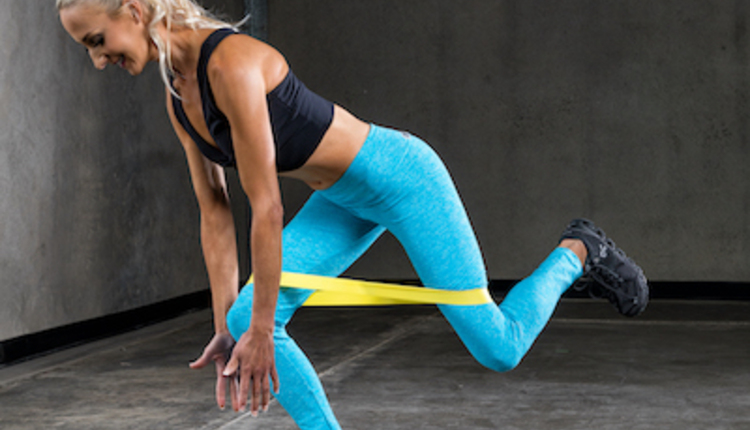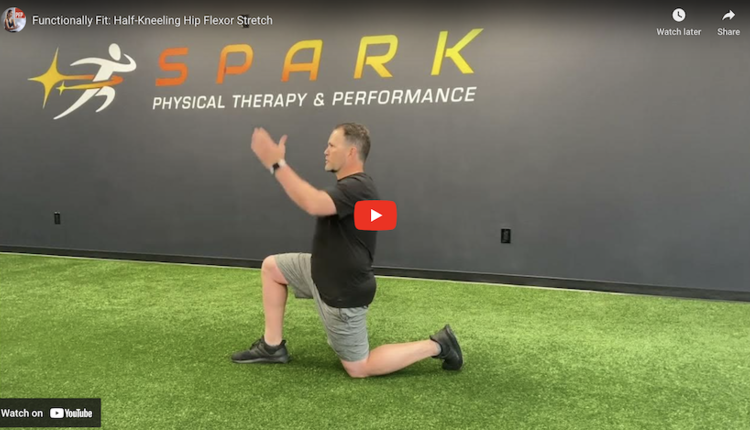
This article first appeared in the Summer 2023 issue of Personal Fitness Professional (PFP).
Exercising safely and effectively is important at any age, but it becomes even more crucial as your clients enter their 30s, 40s, 50s and beyond.
Not only will staying active and adapting their physical activity improve mental health and physical health, but it will also cut down on their risk of developing life-threatening illnesses or having a fall that results in injury, a potential life-altering experience. Additionally, we should all actively be working to improve posture and flexibility — two components most trainers don’t pay a lot of attention to and most people don’t consider until there is a problem.
By doing so, we can develop and maintain good movement patterns and also avoid musculoskeletal injuries. Regardless of their age, it's essential to train them to listen to their bodies, guide them to various ways to stay hydrated (I recommend adding essential minerals to water for improved hydration and mineral intake) and wear appropriate gear and footwear for specific activities.
Additionally, shift their focus to fat loss and muscle retention versus solely focusing on weight loss and what the number is on the scale, regardless of age. Here's why:
- Body composition: The overall composition of their body is more important than just the number on the scale. Losing weight doesn't necessarily mean you're losing fat. It could also mean losing muscle mass, which is not desirable. By focusing on fat loss and muscle retention, your aim is to improve their body composition by reducing body fat while preserving or even increasing lean muscle mass.
- Metabolism: Muscle is metabolically active tissue, meaning it burns calories even at rest. By retaining or building muscle, you can increase their basal metabolic rate (BMR), which is the number of calories their body needs to maintain basic functions. A higher BMR can make it easier to maintain a healthy weight in the long-term.
- Health benefits: Losing excess body fat has numerous health benefits, including reduced risk of chronic diseases such as heart disease, diabetes and certain cancers. Additionally, maintaining muscle mass is important for overall strength, mobility and functional independence as they age.
- Aesthetics: Building and maintaining muscle can help them achieve a more toned and defined physique. It can enhance body shape and giving a leaner appearance, even if the number on the scale doesn't change significantly.
How to Exercise in Your 30s
- Add mobility work: If they were active throughout their 20s, they might have scoffed at the idea of a rest day or taking the time to stretch properly after a workout class. As they enter their 30s, however, they may start to notice more intense soreness and a longer recovery time post-workout. This is normal, but I also suggest working on their mobility.
- Build in strength training
- Keep up the cardio
How to Exercise in Your 40s
Many in their 40s start to shift to more of a sedentary lifestyle. This can present challenges for your client’s body, such as tight muscle groups that cause pain points on the body, limiting movements. Women in their 40s typically notice a dramatic decrease in muscle mass due to the rapidly declining production of testosterone and human growth hormones (HGH). To combat this, alternate one to three days of low-impact exercise like yoga, hiking and walking with one to three days of strength and muscle-building exercises, like pilates, TRX, kettlebells and weightlifting/resistance training.
- Squeeze in 'idle' workouts: For most people, their 40s are characterized by being extremely busy, trying to juggle child care, work demands, caring for aging parents and overall feeling pretty limited with personal time. These years may be full of memories and progress, but they could also leave little time for a trip to the gym.
- Make the warm-up dynamic: 40s are typically where joint health, functionality and cardiovascular conditioning need to take a head seat at the table.
- Mix in low-impact workouts
How to Exercise in Your 50s
During this phase, it’s important to train your clients to:
- Start slowly and easy if they've been inactive: A typical issue is bone mass and density loss over time, which leaves bodies more susceptible to potential injury. So if your client hasn’t been staying active and wants to start working out more regularly, it's essential to start slowly. For example, I recommend beginning with water aerobics and working your way up to hillwalking as their muscles start to strengthen. Women older than 50 may need more time to recover from injuries. Be sure to schedule a rest day or two in-between workouts.
- Give feedback, listen to their bodies and continue to strength train
How to Exercise in Your 60s and Beyond
- Move it or lose it: The goal, simply, is to keep moving, no matter what. The more sedentary they are, the more their muscles, joints and other body parts start to freeze up, flare up and become stiff and brittle.
- Consistent baby steps prevail over perfection: Incorporate pressing, pulling, planks, rotation, squats and split stance movements (like lunges) in your sessions. As well, I also like giving clients sequential movements to keep them “thinking” during their workout. Using the mind x body connection is surrounded by massive science to slow down brain deterioration, such as dementia.
- Work on balance, symmetry, flexibility and coordination: Physical activity should be a consistent, ongoing part of exercise routines, no matter if your clients are 25, 35, 45 or 75. However, your exercise routine and their fitness priorities should adapt allowing healthy vitality and longevity, as your client’s body and physical needs change.
Becca Tebon developed a three-band system used today called powHERbands™️, has launched the “Woman Band Together” movement, has been featured in magazines, podcasts — and many fitness trainers now use her system. She can be reached at Becca@BeccaTebon.com, via Instagram @BeccaTebonfit or visit www.BeccaTebon.com.















